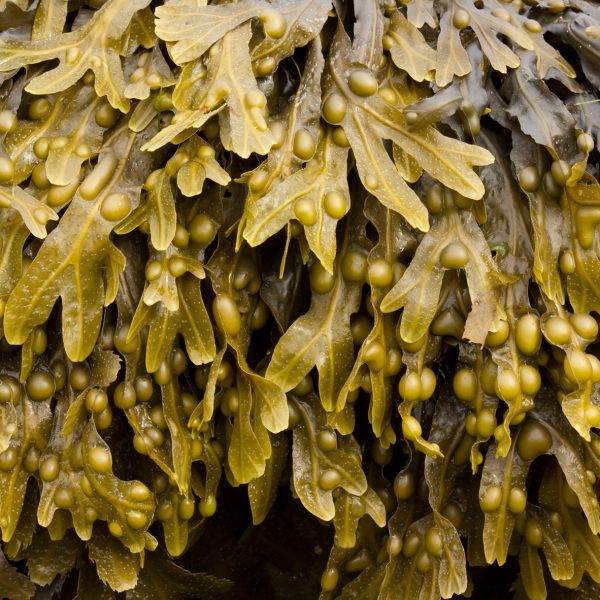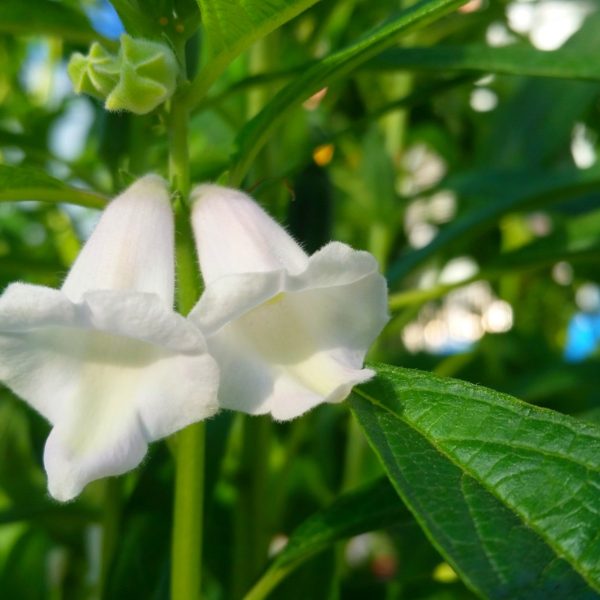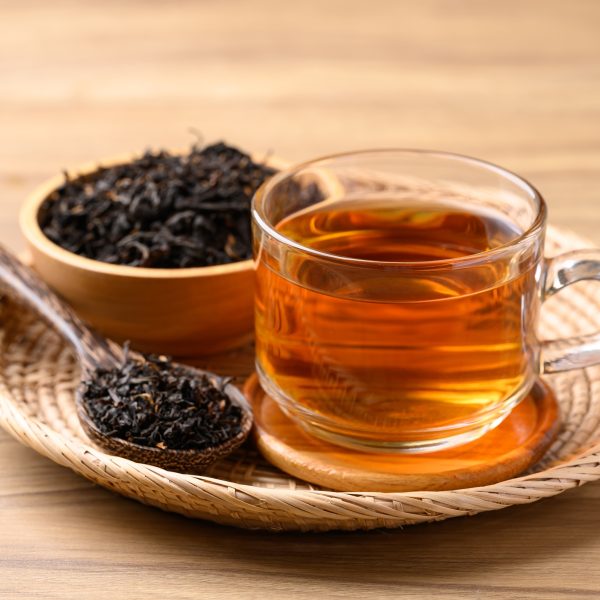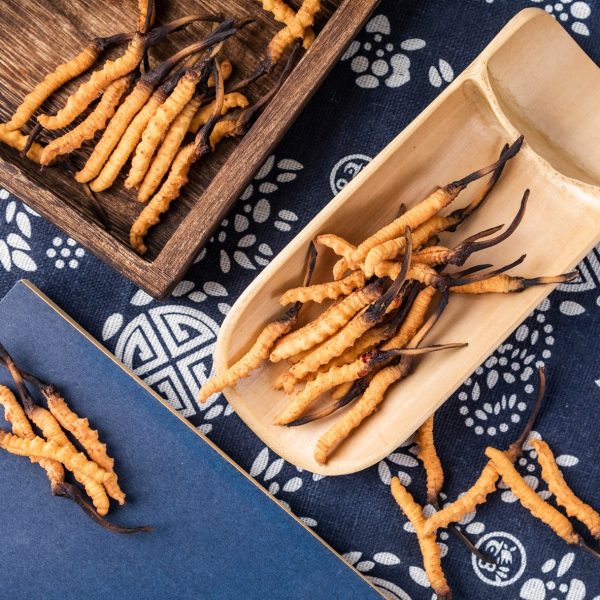Sympathetic and parasympathetic activity shifts in response to certain stimuli. This study explores how ingestion of a cooling solution or herb affects this dynamic and its implications.

In this article, we discuss the “Gastric cooling and menthol cause an increase in cardiac parasympathetic efferent activity in healthy adult human volunteers” (1).
Plant name and species
Peppermint (Mentha × piperita) in the form of peppermint oil capsule, and ispaghula husk
Aim of study
To understand the relationship between gastric stretch and cooling on the cardiovascular system parasympathetic (“rest and digest”) or sympathetic (“fight and flight”) responses.
Study method
The study was a randomised crossover design. Participants ingested 300 ml ispaghula husk (available as Fybogel) to induce gastric stretch. Ispaghula was given at either 37°C or 6°C to test the effects of stretch versus stretch and cooling. In a separate experiment, the subjects consumed two capsules of peppermint oil (200 mg, Boots Pharmaceuticals).
The following measures were made using PowerLab physiological equipment (ADInstruments):
- Continuous ECG monitoring and heart rate (HR)
- Respiratory movements
- Continuous blood pressure plethysmograph values
- Blood pressure also using a sphygmomanometer
- High-frequency (HF) power (as an indicator of cardiac parasympathetic activity)
- The ECG R-R interval calculated as the root mean square of successive differences (RMSSD) (as an indicator of cardiac parasympathetic activity)
- QT interval (QTc) (as an indicator of cardiac sympathetic activity)
Participants rested in a supine position for 20 minutes following which 5-minute baseline measures were taken. The isphagula husk or menthol was consumed and data collected for 20 minutes, and then at 5 minute and 10 minute periods until 110 minutes after ingestion.
Herbal preparation
300 ml of isphagula husk was consumed in a crossover design in the main study. In a separate study, two coated capsules of peppermint oil were ingested (200 mg; Boots Pharmaceuticals, Nottingham, UK).
Sample size
Nine healthy, normotensive, adult volunteers (mean age 24.08 years) were involved in the randomised crossover design study.
Subjects were instructed to avoid alcohol for 24 h, caffeine for 12 h, and food and drink for 2 h before the recording sessions. Subjects attended an initial habituation visit, during which they were familiarized with the protocol.
Results of study
The baseline cardiovascular and respiratory measures were similar for both groups (gastric stretch versus stretch with cold).
Ispaghula (37°C) slightly increased HR after ingestion but this was not a significantly different change. QTc was significantly reduced for up to 10 min suggesting an effect on cardiac sympathetic activity.
Cold ispaghula ingestion (6°C ) induced a significant 15 min decrease in HR and significantly enhanced the two indicators of parasympathetic activity (RMSSD and R-R interval) which were elevated up to 25 and 45 minutes respectively. Peppermint oil capsules produced a response similar to the cold ispaghula with a significant reduction in HR and evoking parasympathetic activity, but over a longer time frame. There was no impact on QTc suggesting there was no sympathetic cardiac response.
Discussion

The aim of the study was to understand the gastro-cardio dynamics following the ingestion of a meal of different temperatures. This study is interesting from a herbal perspective because it explores the potential effects of cooling herbs on the parasympathetic nervous system.
The ispaghula husk given at body temperature is known to distend the stomach and increase sympathetic activity as part of a recognised gastrovascular reflex – stretch receptors in the stomach send signals via the vagus nerve to induce sympathetic activity. This was apparent in the ECG data analysis but not strong enough to alter blood pressure.
Both peppermint oil and a cold solution caused the opposite response, reducing HR and evoking a parasympathetic cardiac response. Whether the cold (or cooling mint) had a direct effect on the gastric stretch receptors, or that this treatment boosted parasympathetic activity downstream is not clear. Other studies have shown that cold thermoreceptors in the stomach can increase cardiac parasympathetic activity, and that mint produces a cooling sensation by activating TRPM8 – an ion channel found on cold-sensitive neurones which are found in the stomach (2). This offers a possible pathway for how mint might be working in the present study.
This was an exploratory physiological study and the participant numbers were low, and the peppermint experiment had no control. Other studies have examined cold temperature as a way of promoting a parasympathetic response as a means of dealing with acute psychosocial stress (3). Further research could explore the cooling effects of menthol on the parasympathetic response as a way of alleviating stress. Research could understand how to most effectively administer menthol perhaps in a cold drink or capsules and how this relates to parasympathetic response.
Conclusion
The outcome of most interest to the authors was the ability of gastric distention to increase a cardiac sympathetic response to maintain postprandial blood pressure. From a herbal perspective, the use of a cooling herb, or cold fibre solution, created a parasympathetic response and reduced blood pressure. Whilst this might have implications for people with cardiac problems, it also demonstrates that cooling herbs such as mint might be helpful in promoting a parasympathetic response which would be beneficial in states such as anxiety where the sympathetic “fight or flight” response is dominating.
References
- Kazadi LC, Fletcher J, Barrow PA. Gastric cooling and menthol cause an increase in cardiac parasympathetic efferent activity in healthy adult human volunteers. Exp Physiol. 2018 Oct;103(10):1302-1308. https://doi: 10.1113/EP087058. Epub 2018 Aug 19. PMID: 30070742.
- Liu B, Fan L, Balakrishna S, Sui A, Morris JB, Jordt SE. TRPM8 is the principal mediator of menthol-induced analgesia of acute and inflammatory pain. Pain. 2013 Oct;154(10):2169-2177. doi: 10.1016/j.pain.2013.06.043. Epub 2013 Jun 29. PMID: 23820004; PMCID: PMC3778045. https://pmc.ncbi.nlm.nih.gov/articles/PMC3778045/
- Richer, R., Zenkner, J., Küderle, A., Rohleder, N., & Eskofier, B. M. (2024). -Lower Vagal Response to the Cold Face Test during Acute Psychosocial Stress is Associated with Higher Cortisol Reactivity. Psychoneuroendocrinology, 160, 106871. https://www.sciencedirect.com/science/article/abs/pii/S0306453023008491
































